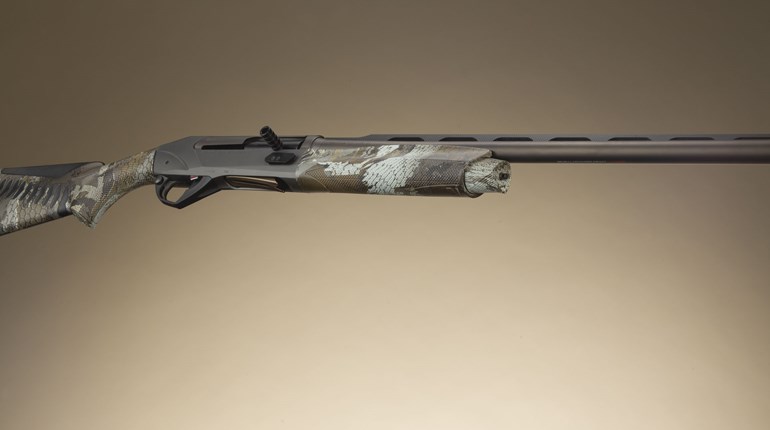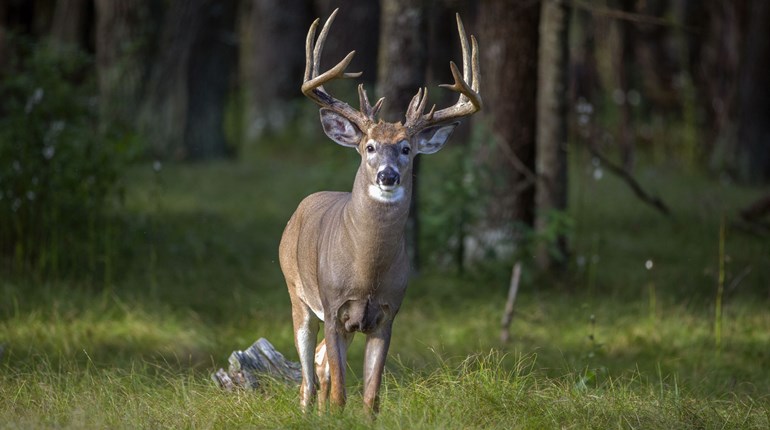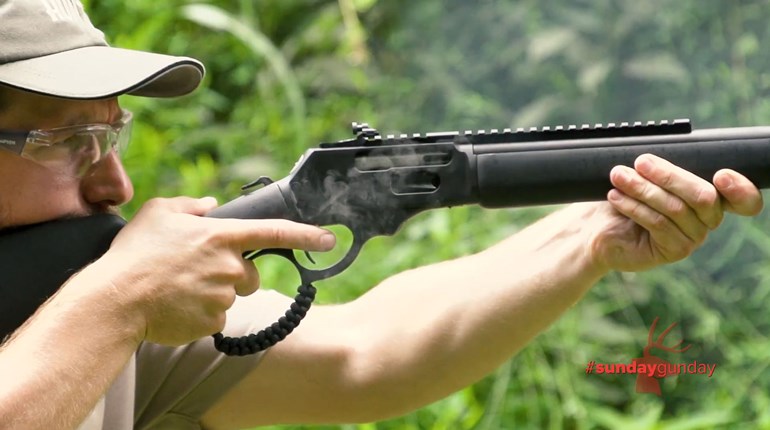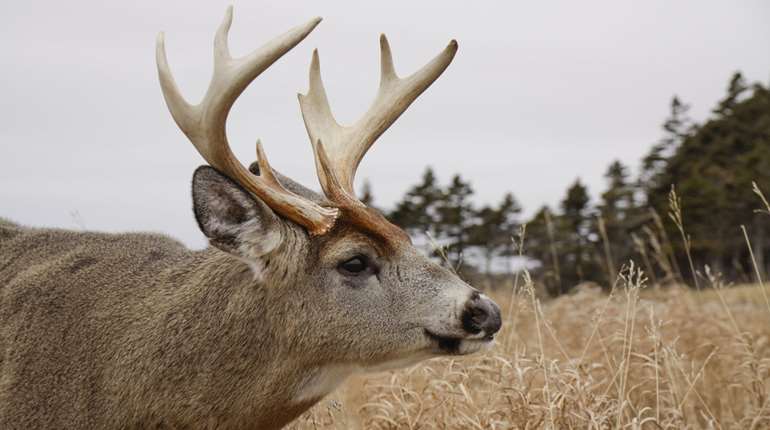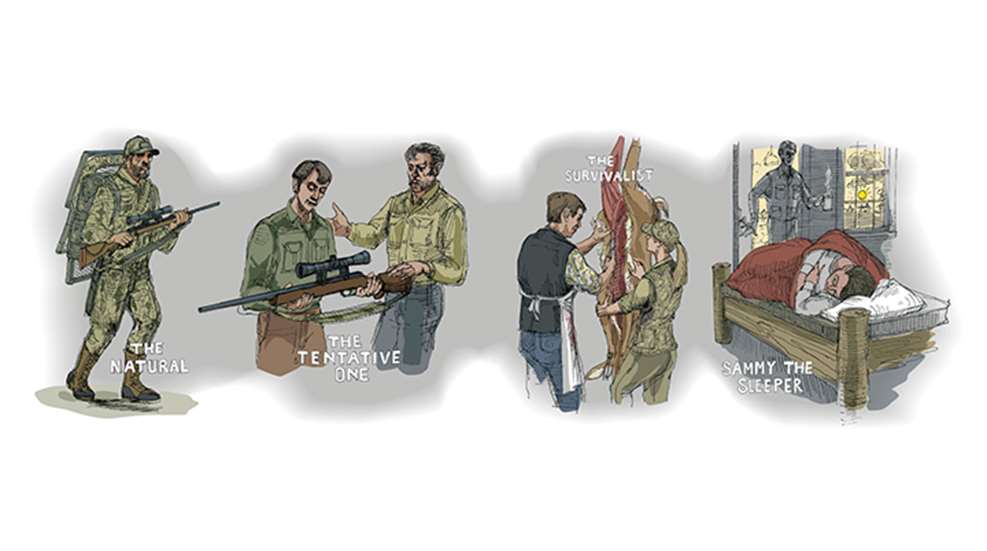
Passing on the skills to hunt is an age-old endeavor memorialized in many forms, from campfire stories to full-on works of literature. Every aspiring hunter dreams of that perfect first kill, and every mentor longs for the ideal setting to make it happen. The perfect scenario mixes just enough natural beauty, anticipation and excitement to make a new hunter race back to the woods for more.
In the quest for an engaging hunt however, the temperament of your hunter has quite a lot to do with the equation. So what happens if that first time isn’t turning out exactly Faulkner-esque? Let’s take a look, broadly speaking, at four types of hunters I have encountered when mentoring first kills in the deer woods, and how best to initiate newbies into our ancient society of providers.
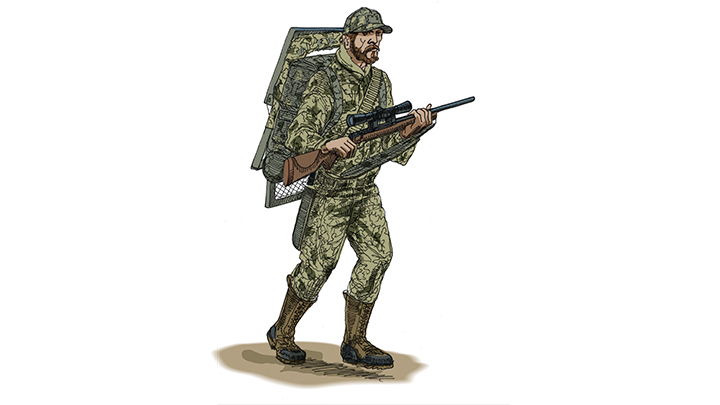
The Natural
This is the person everyone dreams about. Whether a youth or adult, he is in it from the word go. He shows up early, and he has already asked about all the gear he’ll need. About the only issue you have in the woods is getting him to stop scaring off the deer with incessant questions about every aspect of the hunt.
Crafting the perfect hunt for this newbie is easy. Ensure he’s passed a hunter safety course then simply set a time and place to meet. Double-check his gun safety skills (as you should do with everyone on this list). He will quite literally take it from there. Something you forgot to tell him? He’ll ask you. Miss a footfall in the woods? He’ll hear it. Those footfalls will likely be squirrels of course, but hey, the details take time. Whether the deer are moving fast or bedded tight, this hunter is sure to have an exciting time.
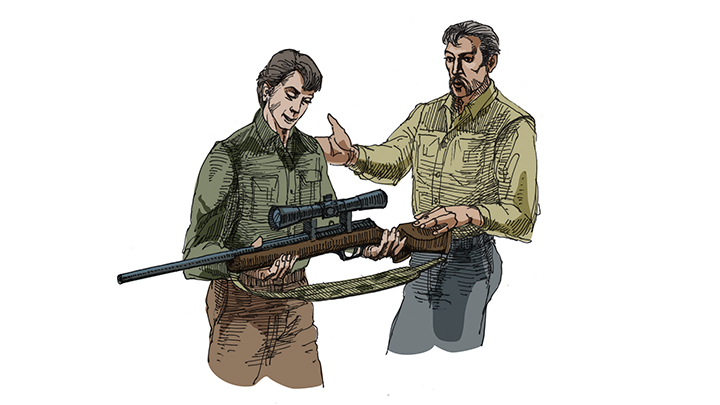
The Tentative One
This hunter resembles the “natural” … all the way up until go-time. A little bit more fidgety, he’ll take a while to settle in, but be ready for a long wait once he does. Often a nature enthusiast, he’ll revel in the time spent outdoors, and may even have some interesting tidbits to tell you about the plants and animals around you. This near-idyllic state of affairs will continue all the way up until you have game in range.
At this point, uncertainty springs to the surface. Buck fever, with the accompanying hard shakes, will probably appear. Excuses will start to trickle out: “I can’t see anything through the scope,” “I can’t get a good angle,” “my position is off.” You’ll watch animals walk by all day with no shot—be they bucks or does.
When this arises, there’s only one thing to do. Shoot one yourself. I know, I know, this sounds like an incredibly selfish solution, but hear me out. Did you ever ride a bike before you saw someone else do it? Did you drive a car before you saw someone else do it? A lot of this tentativeness, particularly among newly interested adult hunters, comes from never having seen the process go down.
So shoot one yourself, take your hunter to the carcass, show him how to field-dress it and, if you do it yourself, how to butcher the meat. Share the meat when you’re done, to make sure he knows he still contributed, and earned some of the kill. Once the process is seen clearly, from beginning to end, take out your hunter again. I guarantee he’ll have an easier time putting meat on the ground.
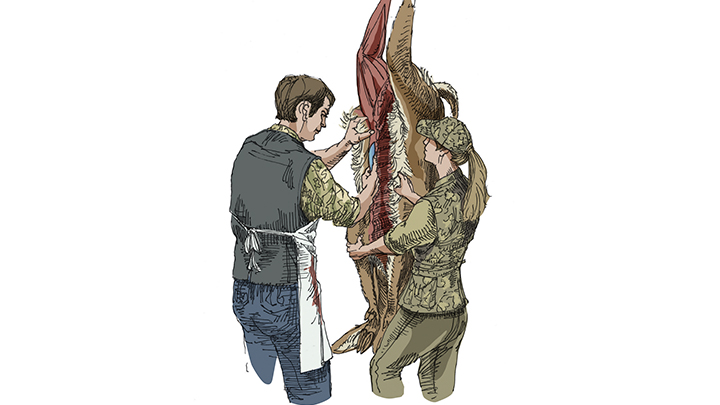
The Survivalist
This woodsman isn’t really all that into hunting but wants to learn anyway, and who can blame him? Hunting is a useful life skill, and many folks feel far more comfortable with the knowledge that they can drop, clean and butcher their own food. Issue is, a lot of hunting is learning the skill of patience, and as one can just as easily do that by staring at a brick wall, it can be hard to get the lesson across. This hunter will generally start to fidget after an hour or so, and will begin checking his watch with regularity not long after.
The best way to go about introducing this hunter is a more active type of hunt. A spot-and-stalk deer hunt or a duck hunt at your favorite honey hole will work better than a traditional treestand outing. Anything—more glassing or moving or straight-up shooting—besides a sit-and-wait hunt is a good option to get this hunter a first kill without the wait. From here you can ease into still-hunting, as he’ll be more liable to accept a longer period of idle time once he’s already familiar with the reward of a successful outing.
If you don’t have the aforementioned options, try an early-season pre-rut deer hunt. Remember, this hunter isn’t after a real wall-hanger. Besides, prior to the rut, deer are much easier to pattern. Find a stand or spot where you’re seeing deer daily and set up there. Chances are your survivalist will have a decent doe in the crosshairs by first day’s end.
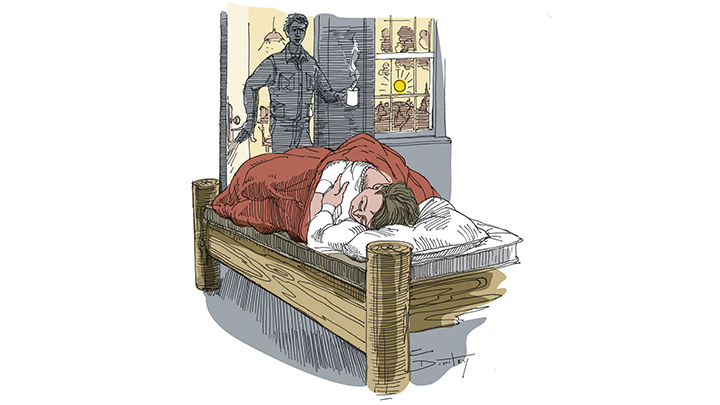
Sammy the Sleeper
Sammy is usually a youth hunter and, guess what, he really doesn’t want to be here. Whether he’s a family member or a close friend, Sammy would rather not wake up for an early hunt; given the chance, at the first occasion he will fall right back to sleep. Something like a high-volume duck hunt rather than a sit-and-wait deer hunt is your only chance at grabbing his interest.
Would you like my honest opinion? Give him a year or so. The worst way to make a hunter is to take to the woods a kid whose heart isn’t in it. All he or she will likely remember is cold, fatigue and a sense of crushing boredom. In this case it’s best to wait for the hunter to ask you to go. Let Sammy sleep.
Whether your hunter is a natural, a little tentative, survival-minded or even a “Sammy,” the most important thing to remember is to make yourself a willing and accessible resource. After all, few people, whether they resemble a character described in a category above or something else entirely, will ever even attempt a first hunt without the confidence imparted by a mentor. So this season, find someone who wants to give hunting a go and be the person who lends that helping hand. I guarantee you won’t regret it.












